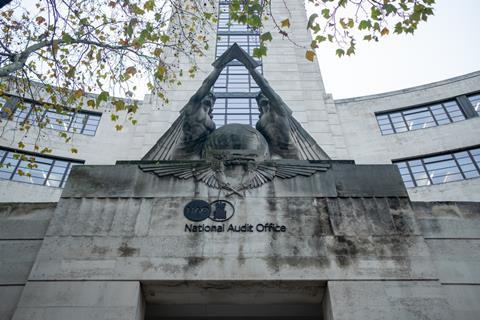“Maximum risk” approach taken by £20bn programme could increase costs and result in hospitals that are too small, NAO report warns
The government will miss its pledge to build 40 new hospitals by the end of the decade, the spending watchdog has said.
The Conservative’s 2019 election pledge is already behind schedule and will now see only 32 hospital schemes completed by 2030, the National Audit Office (NAO) found.
In a scathing report, the government auditors also said ministers’ approach to the programme would not provide good value for money and could result in hospitals that are too small because of overoptimistic assumptions about future healthcare needs.
It also said the government had taken the “maximum risk” option to delay construction of the majority of schemes until the second half of this decade, meaning the volume of work happening at the same time could result in labour shortages, potentially increasing costs.

The plan to build 40 new hospitals by 2030, called the New Hospital Programme (NHP), was unveiled by Boris Johnson during the 2019 election campaign and made policy in 2020.
As of June 2023, three of the hospitals in the first cohort of schemes had opened or part opened against the expectation of five. Forecast costs for the first two cohorts had also increased by 41% between 2020 and 2023.
In May this year, the Department of Health and Social Care (DHSC) announced a £20bn reboot of the NHP which would see hospitals in the third and later cohorts built using standardised materials in an approach termed ‘Hospital 2.0’.
It estimates that construction will be 25% cheaper and 20% quicker compared with traditional approaches by cohort 4.
But the NAO said shortages of technical staff mean that a standardised hospital design is delayed and will now not be ready before May 2024, constraining the NHP’s ability to engage with suppliers.
> Also read: Rebooting the New Hospital Programme: Is this the solution to the NHS backlog?
The watchdog found Hospital 2.0 could result in hospitals that are too small because the NHP is using “unrealistic” models which assume more healthcare will be provided outside of hospitals.
Gareth Davies, auditor general at NAO, said: “Delivery so far has been slower than expected, both on individual schemes and in developing the Hospital 2.0 template, which has delayed programme funding decisions.
“There are some important lessons to be drawn for major programmes from the experience of the New Hospital Programme so far. These include strengthening the business case process to improve confidence on affordability and delivery dates, and improving transparency for key decisions.”
NHS Providers chief executive Julian Hartley said: “The government must future-proof new hospitals and care settings and heed the NAO’s warning that hospitals may be too small given high levels of bed occupancy.
“We must get this right. The government has also made ambitious assumptions about the scale of care that will be delivered in community settings in future.”
A spokesman for the DHSC said: “We remain firmly committed to delivering these hospitals, which are now expected to be backed by over £20 billion of investment, helping to cut waiting lists so people can get the treatment they need quicker.
“Three new hospitals have already opened and more will open this year so patients and staff can benefit from major new hospital buildings, equipped with the latest technology.”



























1 Readers' comment